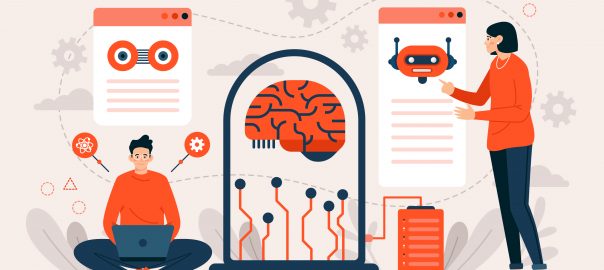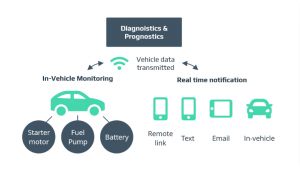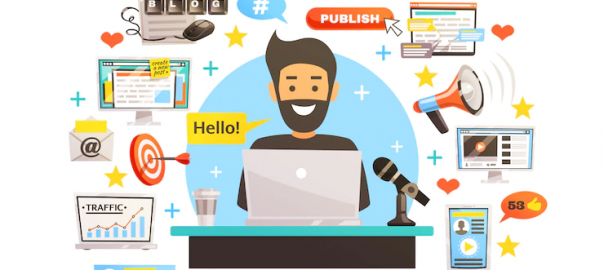Machine Learning (ML) is a vital tool for fraud detection in banks. It can spot potential fraud by examining patterns in transactions and comparing them with known fraudulent activity. It uses algorithms to identify these patterns, which are then used to predict whether or not a transaction is fraudulent. These algorithms are trained using historical data, so they can only identify patterns in existing data and cannot learn new ways as they occur.
This means that companies must constantly update their machine learning models with further information for continuing to use machine learning in Banking to prevent fraud.
How Does Machine Learning Overcome The Traditional Security Techniques Used By Banks?
Machine learning pushes the boundaries of what can be done with security. A traditional security strategy is to make the system as difficult to access as possible, stopping the bad guys before they get in. Banks often use biometrics and key cards to access their accounts, which are more challenging to hack than a username/password combination.
But machine learning in banking prevents fraud even when it’s not done by someone trying to access an account. It can also be used to flag suspicious behavior so that humans can investigate it and decide whether or not it’s worth taking action on.
Machine learning algorithms can analyze data from all sources—customer transactions, social media posts, etc.—and find patterns that indicate fraudulent activity or other risks. These algorithms are trained on examples of fraud so that they know what to look for when new transactions occur.
What Are The Benefits of Machine Learning In Fraud Detection?
Machine learning has been the buzzword in the tech industry for some time. From self-driving cars to automated customer engagement, machine learning is everywhere.
But what does it mean? Let’s look at some of the benefits of using machine learning in Banking to prevent fraud.
-
Speed
Machine learning can help improve the speed of fraud detection by reducing the time it takes to detect and flag suspicious activity. Machine learning algorithms can be trained to automatically flag transactions with a high risk of fraud. This can significantly improve your ability to identify fraudulent transactions quickly so you can act on them before they become too costly to remediate.
-
Efficiency
Machine learning also improves efficiency by automating many manual tasks that waste time and effort. For example, machine learning in banking to prevent fraud can identify known bad actors who are likely to commit fraud in the future, so you can block their access to your business immediately without having to review every transaction they make manually.
-
Scalability
Machine learning allows you to scale up or down your fraud detection capabilities as needed. This is important because fraud patterns change over time as criminals adapt their approach or new types of fraud emerge. Machine learning algorithms are designed with built-in flexibility to adapt quickly when new threats emerge or old threats change tactics.
-
Accuracy
Finally, machine learning offers increased accuracy over traditional methods because it uses data from all available sources—including humans—to learn what normal behavior looks like and spot anomalies that indicate potential problems.
What Are Some Of The Ways Machine Learning Can Be Used To Detect And Block Fraud?
There are many different techniques to detect and block suspicious cases. Some of them include the following –
-
Classification
Classification assigns a label to an observation based on a set of observed values used as predictors. The predictors are inserted into the algorithms, which use training data to learn what labels to give. These predictions can then be used for fraud detection. This is done by identifying fraudulent transactions or users by classifying them as fraudulent or not fraudulent.
-
Regression
Regression is a supervised learning method that predicts future outcomes based on historical data. The regression algorithms can be used in fraud detection to predict the likelihood that a transaction will be fraudulent based on historical data about previous transactions that were labeled as fraudulent or not fraudulent by humans.
-
Clustering And Anomaly Detection
Clustering and anomaly detection are unsupervised learning methods that can be used for fraud detection by identifying patterns within your data that suggest fraud may occur, such as many small withdrawals from an account or many large purchases made at one store over time.
-
Anomaly Detection
Machine learning algorithms search for patterns in existing data that are not typical of what you would expect. If a new transaction is entered into your system and doesn’t fit the pattern of existing transactions, it could be an anomaly.
-
Decision Trees
A decision tree is a tree-like diagram that shows all possible paths that can take place in a decision process. A decision tree algorithm takes in data and tests each piece of information against all possible outcomes to determine if they’re true or false. If any single piece of information leads to an inaccurate result, the entire transaction is flagged as fraudulent.
-
Neural Networks
Neural networks are used to detect fraud in several ways. They can be trained to recognize patterns that indicate fraudulent transactions, such as repeated requests for withdrawals from an ATM or many purchases at one store within a short period.
Neural networks can also monitor customer behavior over time and flag suspicious activities like sudden changes in spending habits or changes in the type of purchases being made (from low-risk items like groceries to high-risk items like jewelry).
-
Natural Language Processing (NLP)
NLP refers to technologies that use machine learning algorithms to analyze text data and extract meaningful information.
For example, NLP software might analyze customer statements and detect instances where someone has been using their bank account number on multiple credit card applications without having applied for those cards themselves. This could indicate that they have been victims of identity theft or another fraud scheme.
Summing It Up
If you’re looking to implement machine learning in banking to prevent fraud or other systems, Mindfire Solutions has got you covered. Our goal is to take the guesswork out of it and ensure you get the most out of your investment.
We have the experience and expertise to help you implement machine-learning algorithms for your security and other needs. Our team deeply understands this technology’s potential, and we can work with you to determine the best way to use it in your organization. Contact us today to see how we can help!










